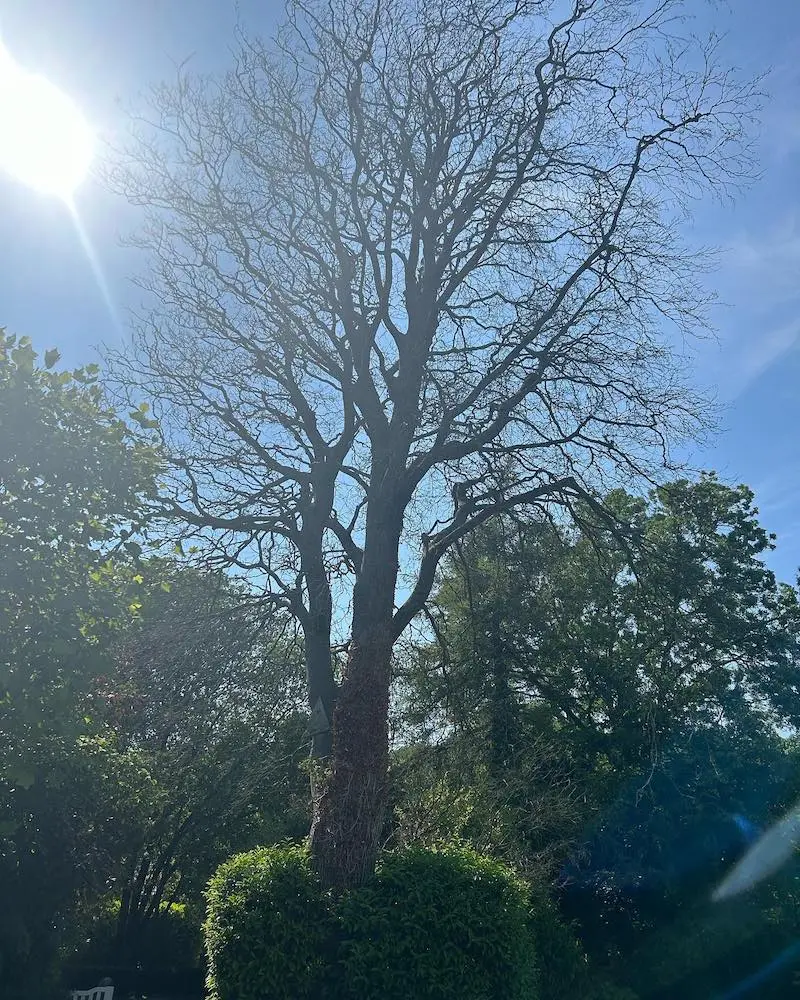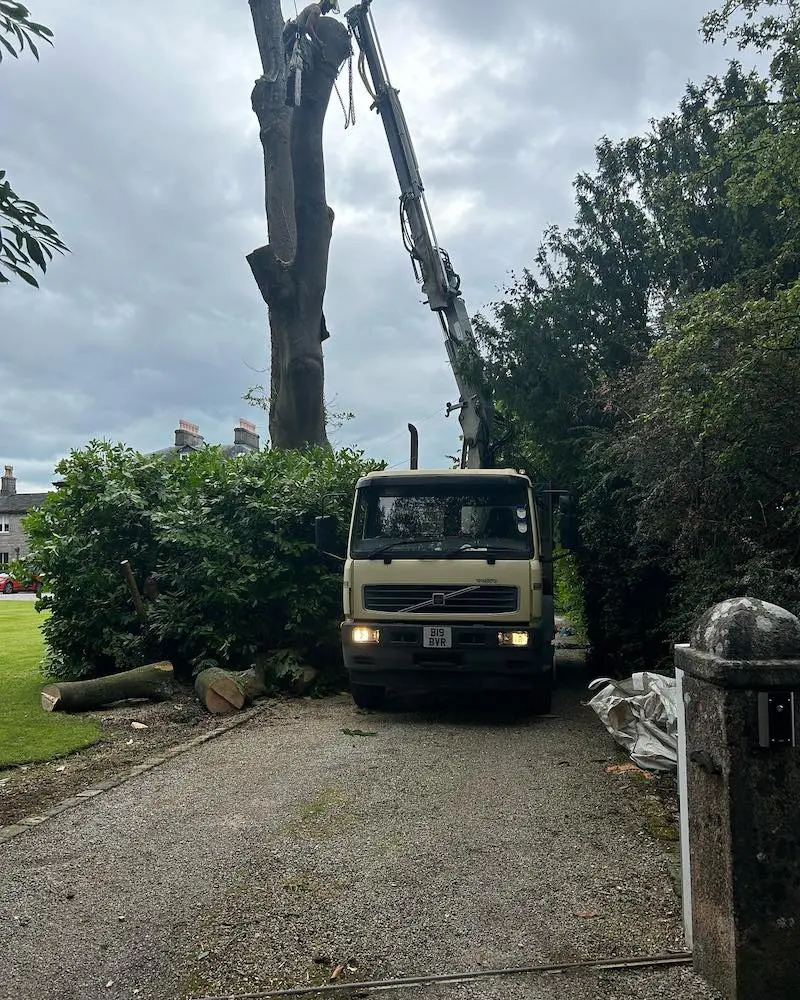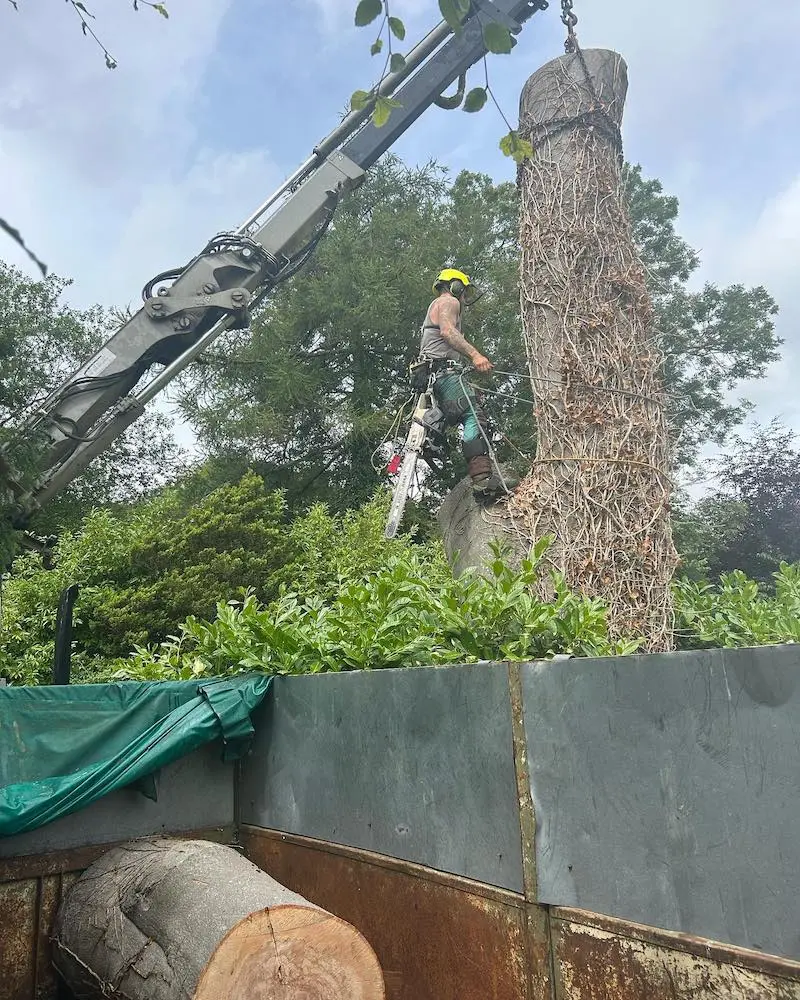Tree Removal with Crane Assistance
Beaver Tree Surgeons recently completed a two-day project in Yealand Conyers to safely remove a large, dead Beech tree. The tree, which stood within a private woodland setting, had been fitted with a Fujikura Europe Ltd bracing system many years ago — a name that brought back memories for our team.


With the tree now completely dead and structurally compromised, removal was the only safe option. Our crane truck proved invaluable, allowing us to dismantle and lower heavy sections of timber efficiently while minimising the risk to both the team and surrounding landscape.
The job was completed smoothly over two days, with all timber and debris cleared from site. The crane access meant reduced manual handling, faster progress, and a much safer working environment.


Why Are Trees Braced?
Tree bracing is a technique used to provide extra support to weak or structurally compromised limbs or trunks. It’s often done when a tree has:
- Major codominant stems prone to splitting
- Signs of decay or past storm damage
- High amenity or conservation value and needs to be retained
Bracing systems like cables, rods, or synthetic slings are installed to redistribute weight and reduce movement in vulnerable areas, helping to prevent limb failure.
Potential Downsides of Bracing:
- Hidden Risk: Bracing can give a false sense of security. Without regular inspection, hidden decay can worsen while the brace appears to “do its job.”
- Neglected Maintenance: Older systems, like the one found in this Beech, are often forgotten and never replaced or checked.
- Stress Points: Rigid braces can introduce new stress points if not installed correctly.
- Cost vs Benefit: Bracing is only worthwhile if there’s a plan to retain the tree long-term — otherwise, timely removal is safer and more cost-effective.
In this case, the original brace had long outlived its intended lifespan, and the tree had since declined beyond saving.


